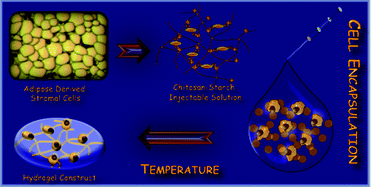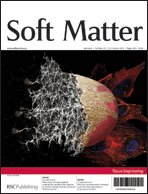Tissue engineering strategies have been showing promising early results in articular cartilage lesions repair. Hydrogels based on natural origin polymers as chitosan glycerol-phosphate (CGP) thermo-sensitive formulation that can be implanted in a minimal invasive manner, represent a great promise as injectable scaffold choice for cartilage tissue engineering, but it lacks in mechanical properties. A different formulation, from which a firm texture gels results is, therefore, desirable.
In this work we first aim to investigate the suitability of CGP to produce an injectable thermosensitive, pH-dependent solution, when combined with increasing concentrations of starch: 0.5% (I), 1% (II), and 1.5% (III). The data collected from the rheological measurements showed that the addition of starch to the CGP did not alter the transition temperature and confirmed the heating inducing gelation of all solutions, supporting the ability of these novel formulations to be applied as minimal invasive systems. The evaluation of the dynamic mechanical analysis of the hydrogels showed an increase in the storage modulus within increasing starch concentration, clearly demonstrating that best viscoelastic properties were obtained with the novel chitosan-starch based solution. The incorporation of starch also improved the degradation profile. All materials showed to be biocompatible through the cytotoxicity screening in vitro. These data suggested the potential of novel thermo-responsive chitosan-starch hydrogels to be used as injectable vehicles for cell delivery in cartilage tissue engineering applications.
In a second phase, the potential of chitosan-β-glycerophosphate (CGP) and chitosan-β-glycerophosphate-1% starch (CST) hydrogels to induce chondrocytic differentiation and cartilage matrix accumulation were evaluated, as well as the influence of starch in the chondrogenesis of encapsulated adipose derived stromal (ADSC) cells. The ADSC were homogeneously encapsulated, remained viable, proliferated, and maintained the expression of typical chondrogenic markers genes, and deposited cartilage ECM molecules. Improved results were obtained within the novel CST constructs. The overall data suggest that chitosan-β-glycerophosphate-starch hydrogels could be considered for chondrogenic differentiation of adipose derived stromal cells for cartilage-engineered regeneration using minimal invasive techniques.


 Please wait while we load your content...
Please wait while we load your content...